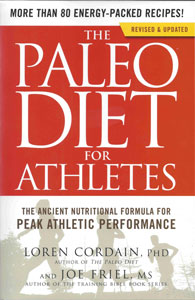Running and Nutrition: What to eat before, during and after a long run
For a sport that seems as simple as just lacing up your shoes and hitting the road – one foot in front of the other – running is truly a science. At least that’s what I’ve learned after enough time running long distances. The number one conversation I seem to have over and over with runners of all skills and abilities is about running and nutrition. What is the secret to “perfect” race fueling? What is the best pre-race dinner and breakfast to eat? What will give you enough energy to have your most stellar performance in a race? What do you eat to recover? And, oh by the way, how do you do it all without gaining weight?
Yep. Figuring out running and nutrition can feel like playing the lottery or trying to discover the fountain of youth. But I think I’m getting closer.
There are no 2 runners on the face of the planet who are exactly alike. So what works for me or you may not work for everyone. I have never felt like I’ve hit the bullseye when it comes to racing, running and nutrition. In my quest to achieving my 2013 race goals, I will be using a strategy based on the book The Paleo Diet for Athletes by Loren Cordain and Joe Friel. I know, I know. You may be getting a little tired of hearing about my 28-Day Transformation Challenge and grand experiment with the paleo diet, but you’ve got to love an endurance nutrition plan that considers itself to be “the ancient nutritional formula for peak athletic performance.”

Based on the book, here is the approach to fueling I’m going to be testing out:
- On most days during the week: My diet will consist mainly of lean proteins, vegetables and fruits, along with healthy fats such as avocado, nuts, olive oil and coconut oil. I’m going to mostly avoid grains, dairy and sugar, but will certainly have some cheat days every month. [Looking for some healthy recipes that fit this bill? Check out my paleo clean eating pinterest board for ideas!)
- The week of a target long run or race: I will shift my food choices to include more carbohydrates to make sure my fuel tank is fully charged for the big day, including more fruits such as bananas, peaches and watermelon, as well as vegetables like sweet potatoes and potatoes. I will also snack on some dried fruit. To moderate the glycemic index of these foods (how quickly blood sugar levels rise after eating them), I’ll include protein and fat with each meal, such as olive oil and lean meats or fish. I will also make sure the foods I’m eating are very low in fiber to allow for easier digestion in preparation for the next day’s long run or race.
- Pre-run breakfast: I will aim to eat at least 2 hours before a target long run or race, consuming 200 to 300 calories per hour before my run or race starts (e.g. eating 2 hours before would mean I’d need 400 to 600 calories). I will focus on taking in mostly carbohydrates that have a low glycemic index (meaning it takes longer for the sugar to get into my blood). I will keep my meal low in fiber but will include protein. I will drink to satisfy thirst, and will only consume water during the last hour leading up my run or race.
Here are some good pre-race food choices The Paleo Diet for Athletes recommends:
- Boiled or scrambled eggs with fruit that is low in fiber, such as bananas, peaches, cantaloupe and watermelon. Avoid apples, berries, dates, figs, grapes, pears, mango and pineapple. (I’ve made the mistake of eating dates and mango the night before a long run. It wasn’t pretty. Just sayin’.)
- Unsweetened applesauce mixed with protein powder (I use egg white protein powder.)
- Pre-race smoothie blending a low-fiber fruit, fruit juice (only ingredients are fruit) and 2 to 3 tablespoons of protein powder
- Sports bar with protein (This is the least ideal option, but if you’ve found something that really works for you, don’t fix what ain’t broke.)
- 10 minutes before a race: Depending on your body size, consume 100 to 200 calories from a few ounces of sports drink or gel, followed by 6 to 8 ounces of water. The authors say it will give you an energy boost needed right before starting without any negative effects. (I will consume a honey stinger gel that contains 120 calories.)
- Nutrition during running: Drink to satisfy thirst, and take in 200 to 300 calories per hour, depending on your body size and experience. Gels and sports drinks are preferred in the book. The minimum intake is 1 calorie of carbs per each pound you weigh per hour (e.g. if you weigh 150 pounds you need a minimum of 150 calories of carbs each hour). For marathons and events that are more than 4 hours, the book recommends consuming your nutrition in equal 10 to 20-minute segments. For those participating in triathlons and ultra races exceeding 4 hours, solid foods should be of moderate to high glycemic index, low in fiber and easy to digest. (During triathlons I’ve enjoyed eating potatoes and Honey Stinger waffles).
- Nutrition for recovery: The mistake I learned from reading The Paleo Diet for Athletes is that I haven’t been refueling fast enough after long runs/races lasting more than 60 to 90 minutes. The book counsels that it’s critical to start focusing on recovery immediately following a race or target long run. The authors suggest consuming at least 3 calories of carbs per pound of body weight within the first 30 minutes after your race/long run, as well as 16 ounces of fluid for every pound you lose sweating during exercise. Your recovery meal during this period should consist of protein, replace electrolytes and provide glucose and fructose. So what does that mean? It means making a recovery drink that will do all that for you. The book suggests blending 12 to 24 ounces of fresh fruit juice depending on your body size (apple, grape, grapefruit, orange and pineapple are good choices according to the authors; I like the Arden’s Garden brand), a piece of fruit and protein powder (I use egg white powder). Throw in several pinches of salt and some ice cubes if you’re not using frozen fruit. For my body weight, my recovery drink should be about 420 calories. The book includes a list of what is right for you based on your body size. I made one of these this morning after my cycling and boot camp workout and it was really satisfying.
- You should continue to recover for the same amount of time you were exercising. So if you ran for 2 hours, your recovery period should be 2 hours. Continue focusing on hydrating and fueling during this period. Then go back to the regular paleo diet recommended in the first bullet of this list.
And there you have it. Will this strategy lead me or you to a PR this year? That I don’t yet know. But I’m very hopeful it will help enhance my performance and keep me focused on putting the right things in my body at the right times.
What is your plan for running and nutrition? If you’ve ever read The Paleo Diet for Athletes, what did you think about the book? Have you ever tried its plan?



Comments
I was interested in this book. I’ll have to look into it.
Hi, have a race coming up and have been eating clean and was wondering what to take during race. I came across this when googling. With the sports gels and energy drinks arent you worried about whats in them? Are there better options out there?
Hi Erin! While I was doing strict Paleo earlier this year, I would use raisins or Lara Bars on my long runs or workouts. Honey can work too. You may also need to bring some salt packets with you if you are just using water for electrolyte replenishment. Salty potatoes also work for me on the bike. I no longer am “Paleo” on my long workouts. I use GUs on my runs and Honey Stinger Waffles on the bike. Honey Stinger has fewer “fake” ingredients than most, especially in their honey gold gels. I also drink Nuun (electrolyte replacement tabs with no sugar and 8 calories). I don’t want my performance to suffer, and I figure if I eat right the majority of the time, it is better than the alternative. Hope this helps!
hey there!
I stumbled upon this and am glad I did! I’m doing whole 30 but am training for my first ironman. Ah!!! I have thrown around trying to stay ‘paleo’ during my rides of 80-100 miles but that sounds terrible honestly. I’m glad to see you take Gu and honey stingers (I love bonk breakers) for long stuff.
Question. What about after? Do you replenish with non-paleo stuff like whole grain? That’s what I’m not sure about yet.
Thanks!! Loving the blog.
Hi Meg,
Thank you so much for stopping by and visiting runladylike.com. Good luck with the Whole 30. I actually don’t prescribe to paleo or Whole 30. I tried it out for a few months and it really just wasn’t for me, although I do highly recommend a diet of mainly lean protein, wholesome fruits and veggies, healthy fats, etc. When I was doing this diet I would fuel after with sweet potatoes, chicken and fruit/veggies, protein smoothies with fruit, an egg scramble, etc. Now I just really use my best judgment when it comes to food and intuitive eating. I hope that helps. Enjoy the process. xo
Hi! Thanks for this great info. For a half marathon, do you think energy gels are still a decent choice for those of us who are hypoglycemic? If not, what would you suggest? TIA!
Hi Tanya! Thanks for stopping by! While I’m a huge fan of gels as the first option, I would suggest talking to a registered dietitian or nutritionist who understands your individual needs. That is beyond my area of expertise. I’m a huge fan of Anne from fannetasticfood.com and Anne RD. She may be someone good to reach out to. Best of luck with your training and fueling plan! xo
Lol thx! Actaully, I am a nutritionist, but I’ve never run that far before and have a race on Sat, so still trying to experiment with the balance. Have you ever used coconut water during races?
I have not. I use water, Gatorade on course and salt pills as needed for extra electrolytes. Best of luck in your race. I wouldn’t reccomend trying anything new on race day that you don’t yet know if it works, but definitely continue experimenting on long runs during your next training cycle.
Thanks again! Been exploring your site all week and the info is so very helpful! Really appreciate this blog!!
Awe! Thank you SO much Tanya! I’m so very glad you’ve found it helpful. Good luck in your race and keep me posted on how it goes and what you decide on the nutrition front. xo